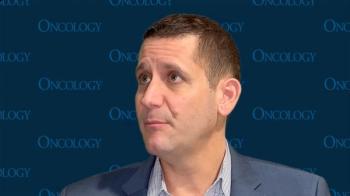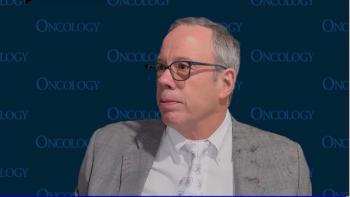
Selinexor, HER2-Targeting ADC May Provide Options for Endometrial Cancer

Ritu Salani, MD, discussed investigational endometrial cancer treatment options for patients with varying subtypes of endometrial cancer.
CancerNetwork® spoke with Ritu Salani, MD, a board-certified gynecologic oncologist and director of gynecologic oncology at the University of California, Los Angeles Health, about other developments in endometrial cancer that have the potential clinical implications. In particular, a mismatch repair proficient (pMMR) TP53 wild-type maintenance strategy and antibody-drug conjugates (ADCs) were discussed.
Salani noted early data for selinexor (Xpovio) in the treatment of patients with pMMR TP53 wild-type tumors. Although she said treatment with selinexor was being evaluated in a clinical trial, she expressed excitement for the therapy as it could serve as an alternative option to frontline immunotherapy.
In the phase
Salani also highlighted upcoming developments in both TROP2 ADCs and folate receptor–alpha targets, which she believes may help inform patient outcomes in later lines of therapy. Particular emphasis was given to HER2-targeting ADCs in combination with chemotherapy, which has shown compelling data in small trials to amplify HER2 expression. Salani concluded that these options help to optimize patient outcomes by providing individualized care based on tumor profile vs cancer type.
Transcript:
[W]e have a target for a maintenance strategy, particularly for the pMMR p53 wild-type called selinexor, which has had some provocative early data. It is being validated in a study right now. I am excited for that, because that might be a way to strategize which patients get immunotherapy up front and which patients may benefit from this alternative option.
There are other new agents. I was talking about that needs gap—about creating that second-line gap in therapy. There are exciting things on the horizon, including TROP2 antibody-drug conjugates [ADCs] and folate receptor–alpha targets, which are helping to inform how patients may do in these later lines of therapy. We also have HER2 [ADCs], which [have] some provocative or compelling data in small numbers; that's being further evaluated.
We have ongoing trials looking at HER2 expression or amplification in combination with chemotherapy, so trastuzumab (Herceptin) in combination with chemotherapy. The thing that this really highlights is that the treatment is shifting from “you have endometrial cancer” to “you have this tumor profile,” and really focusing on a personalized approach for patients, which may optimize outcomes and minimize toxicities from unnecessary or ineffective therapies.
References
- Vergote I, Pérez-Fidalgo JA, Hamilton EP, et al. Oral selinexor as maintenance therapy after first-line chemotherapy for advanced or recurrent endometrial cancer. J Clin Oncol. 2023;41(35):5400-5410. doi:10.1200/jco.22.02906
- Meric-Bernstam F, Makker F, Oaknin A, et al. Efficacy and safety of trastuzumab deruxtecan in patients with HER2-expressing solid tumors: primary results from the DESTINY-PanTumor02 phase II trial. J Clin Oncol. 2023;42(1):47-58. doi:10.1200/JCO.23.02005
Newsletter
Stay up to date on recent advances in the multidisciplinary approach to cancer.


















































































